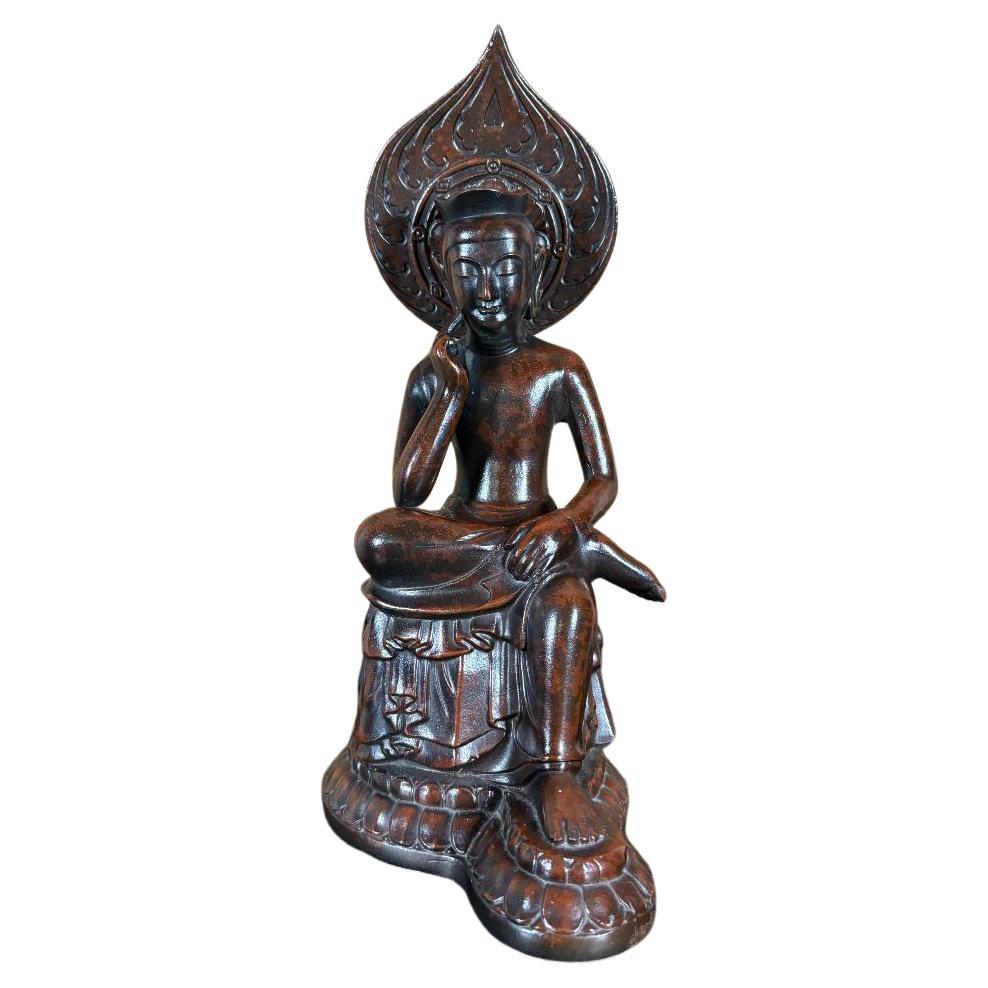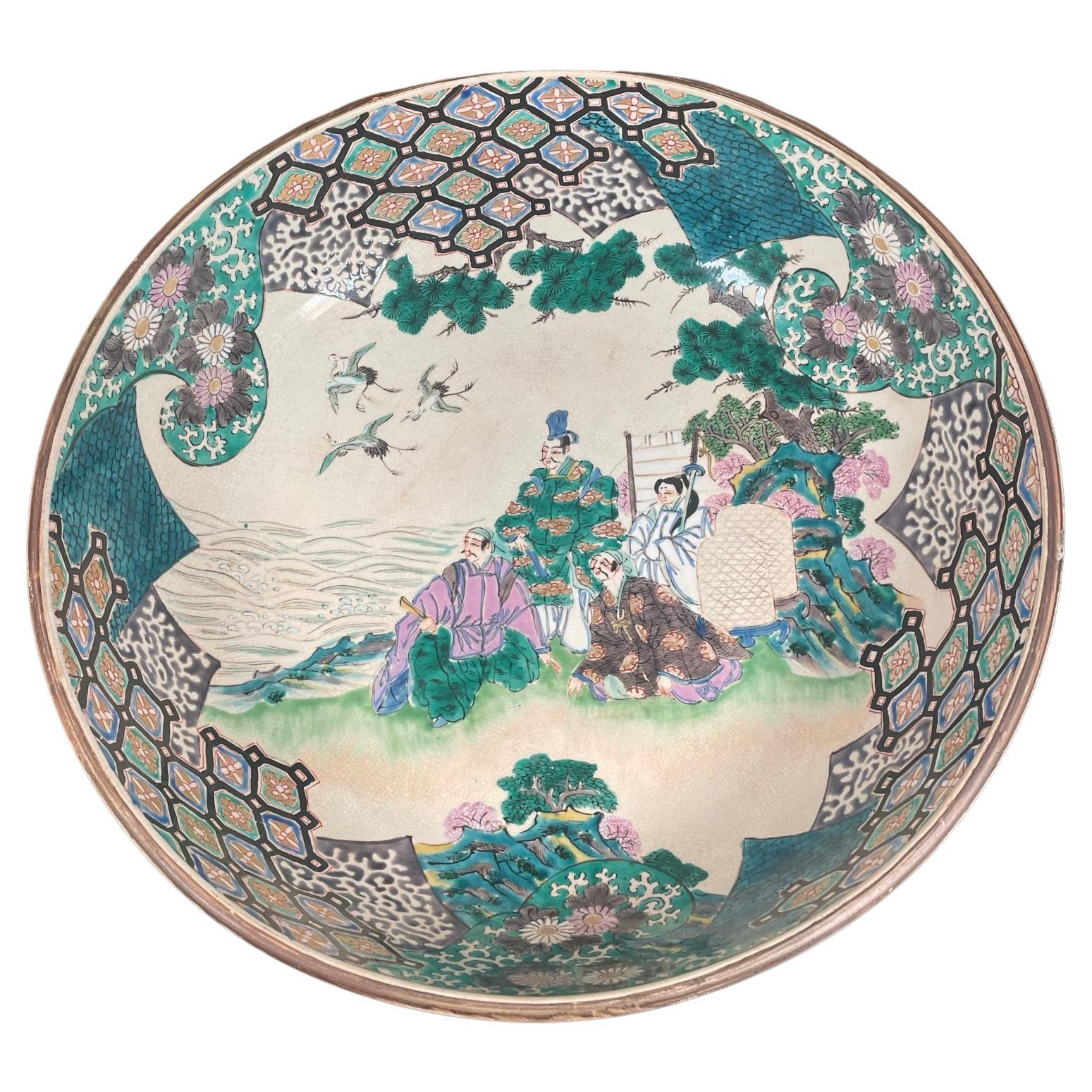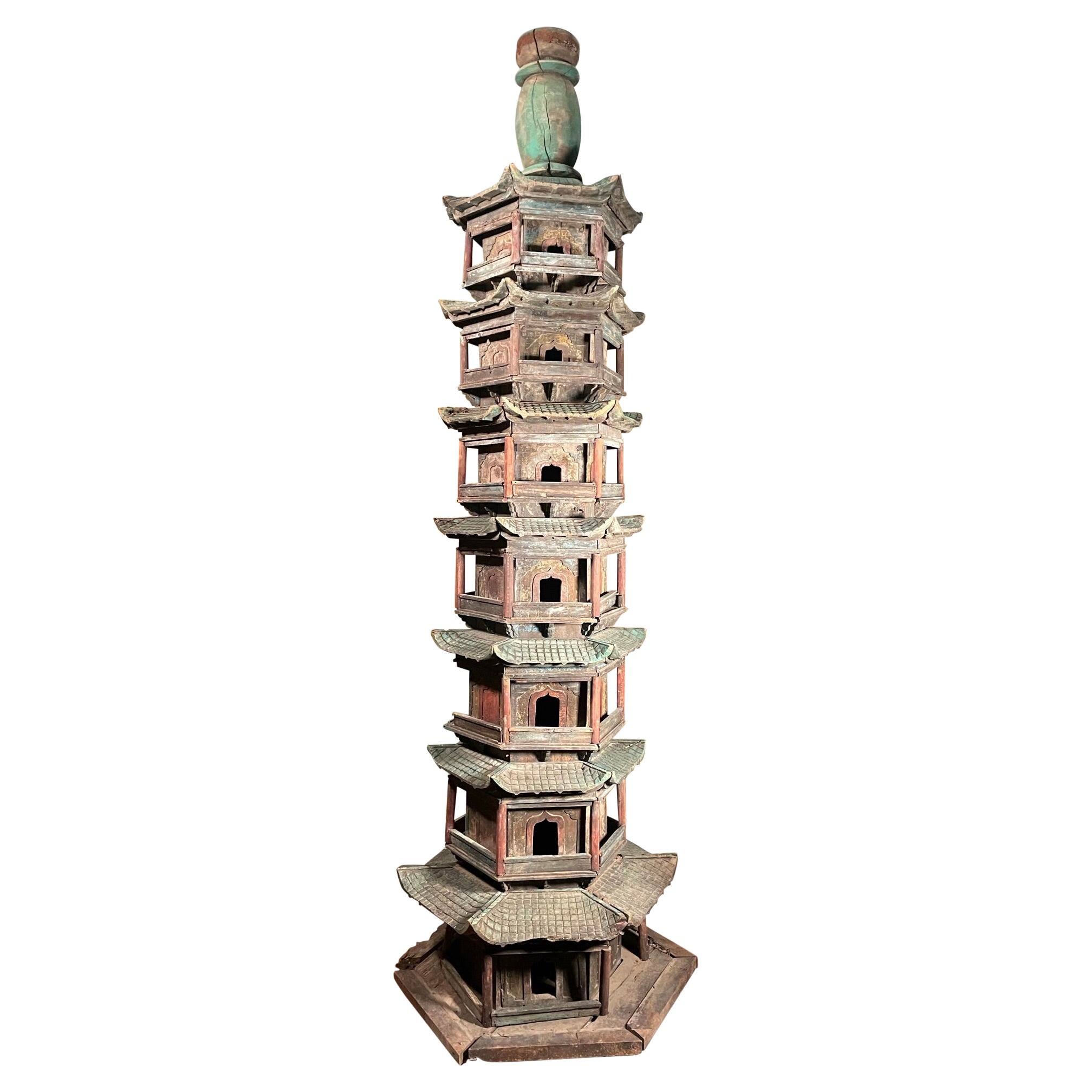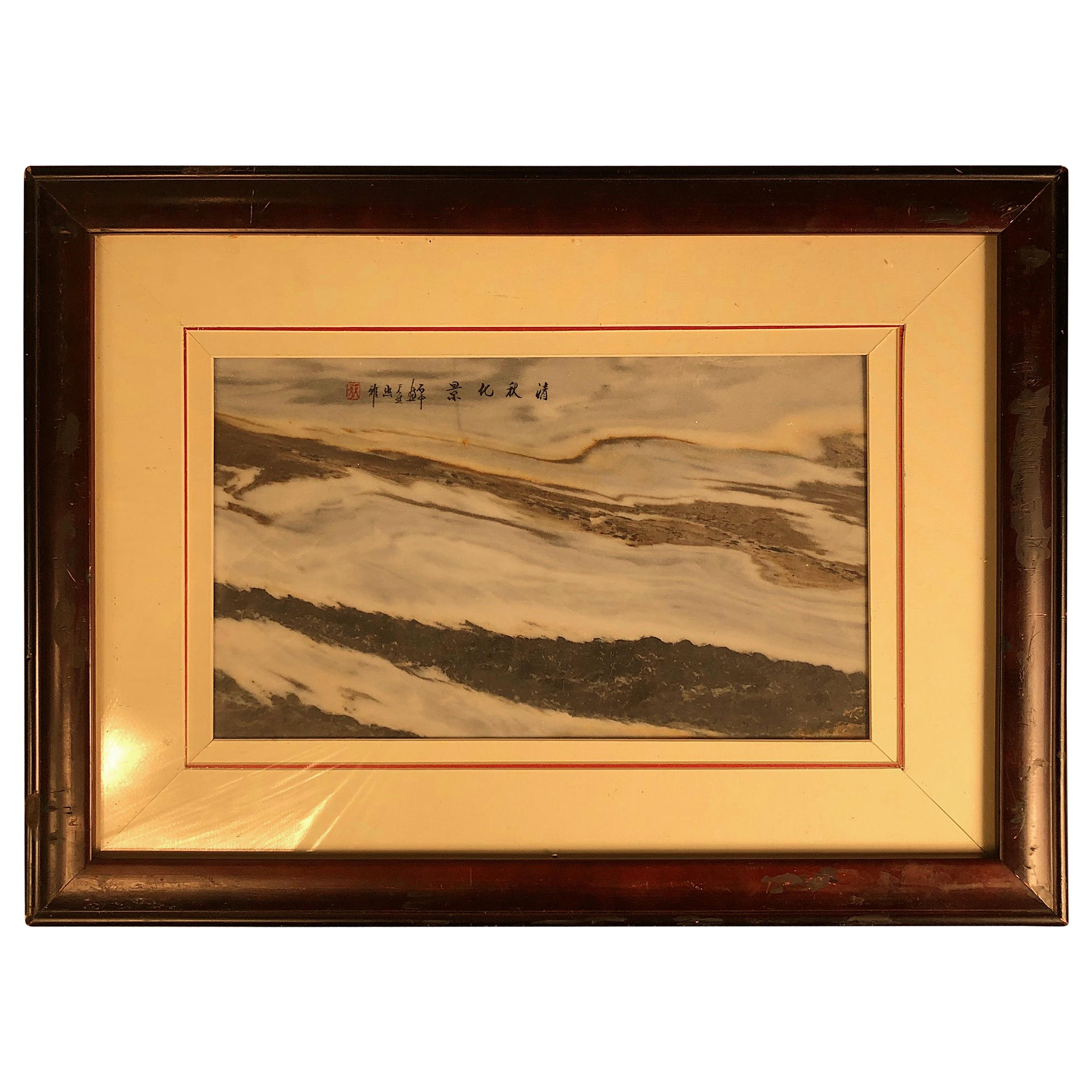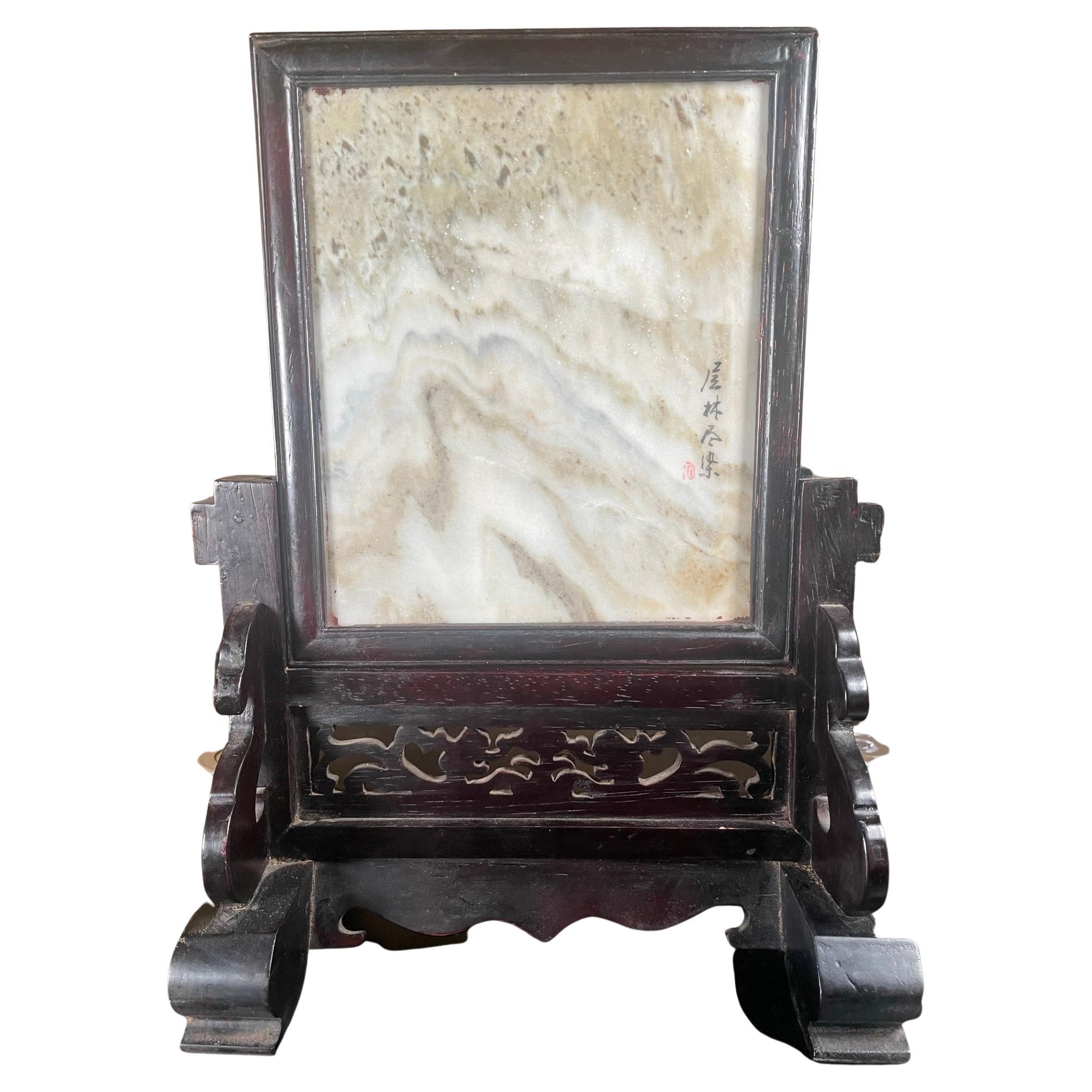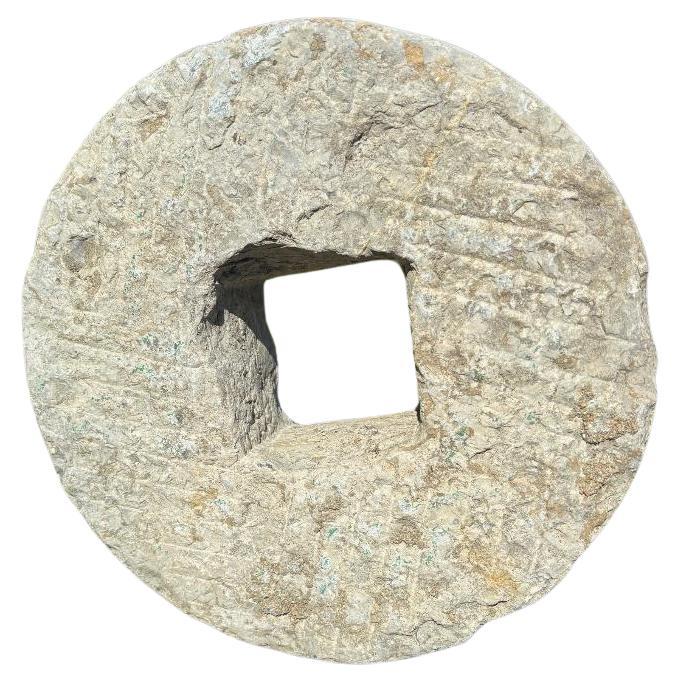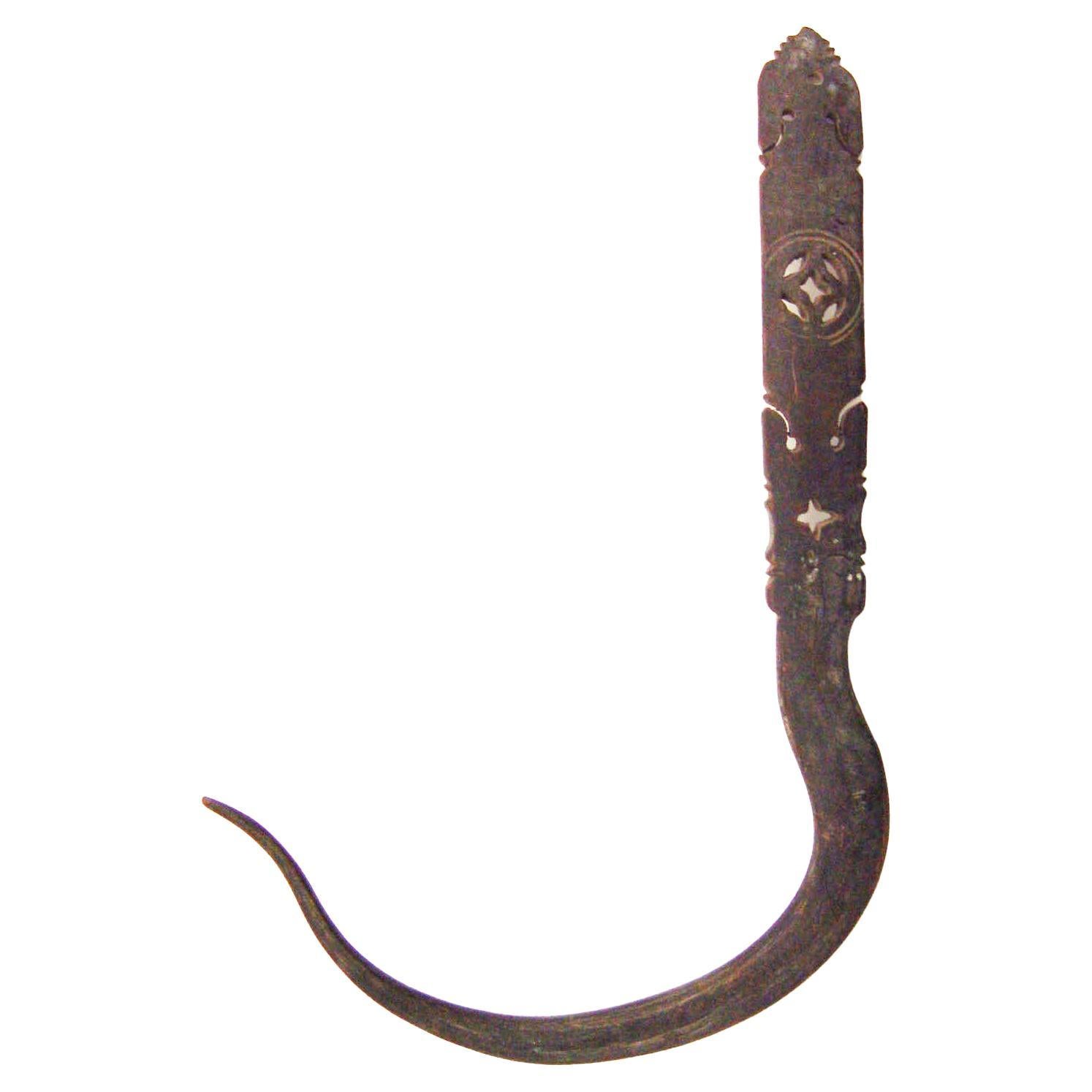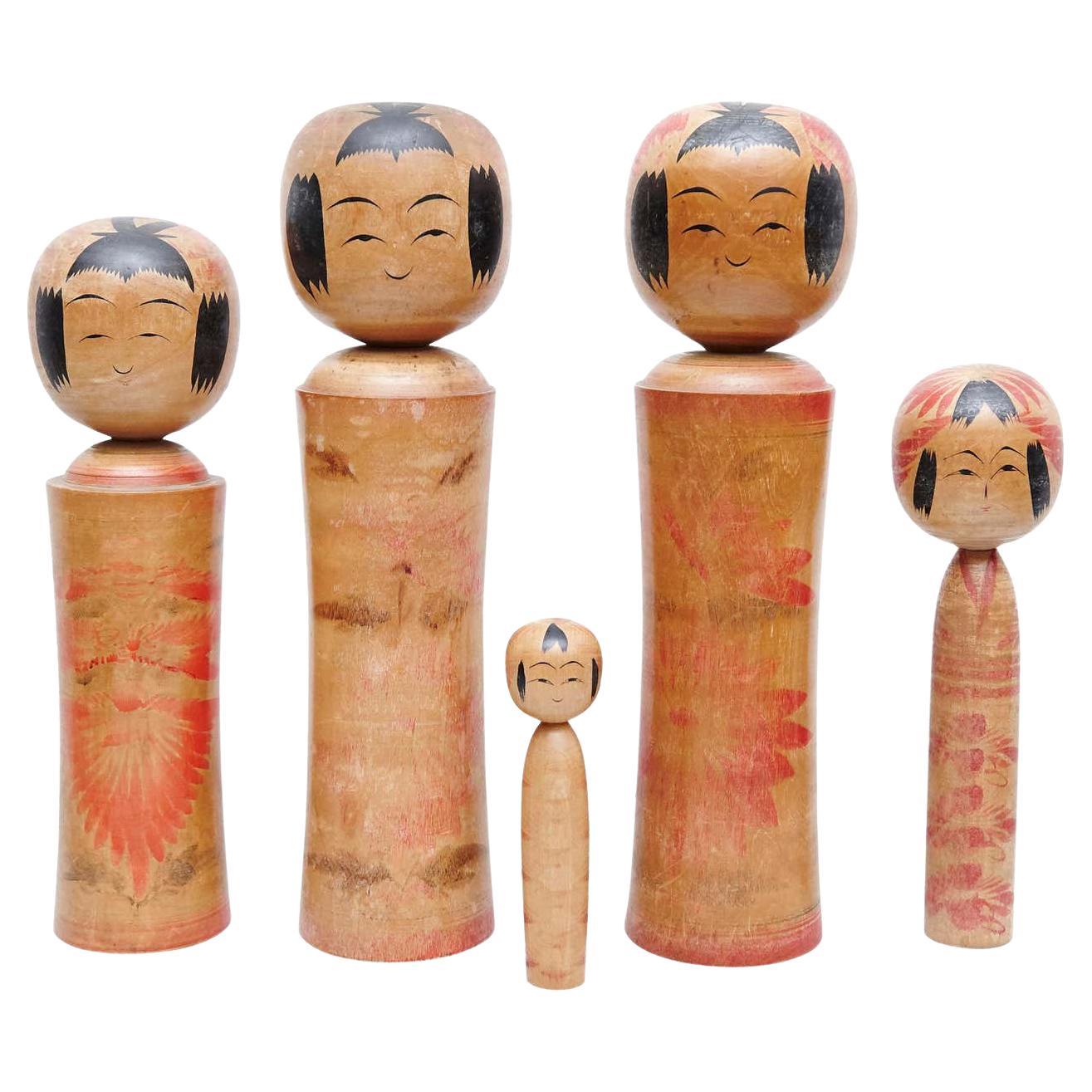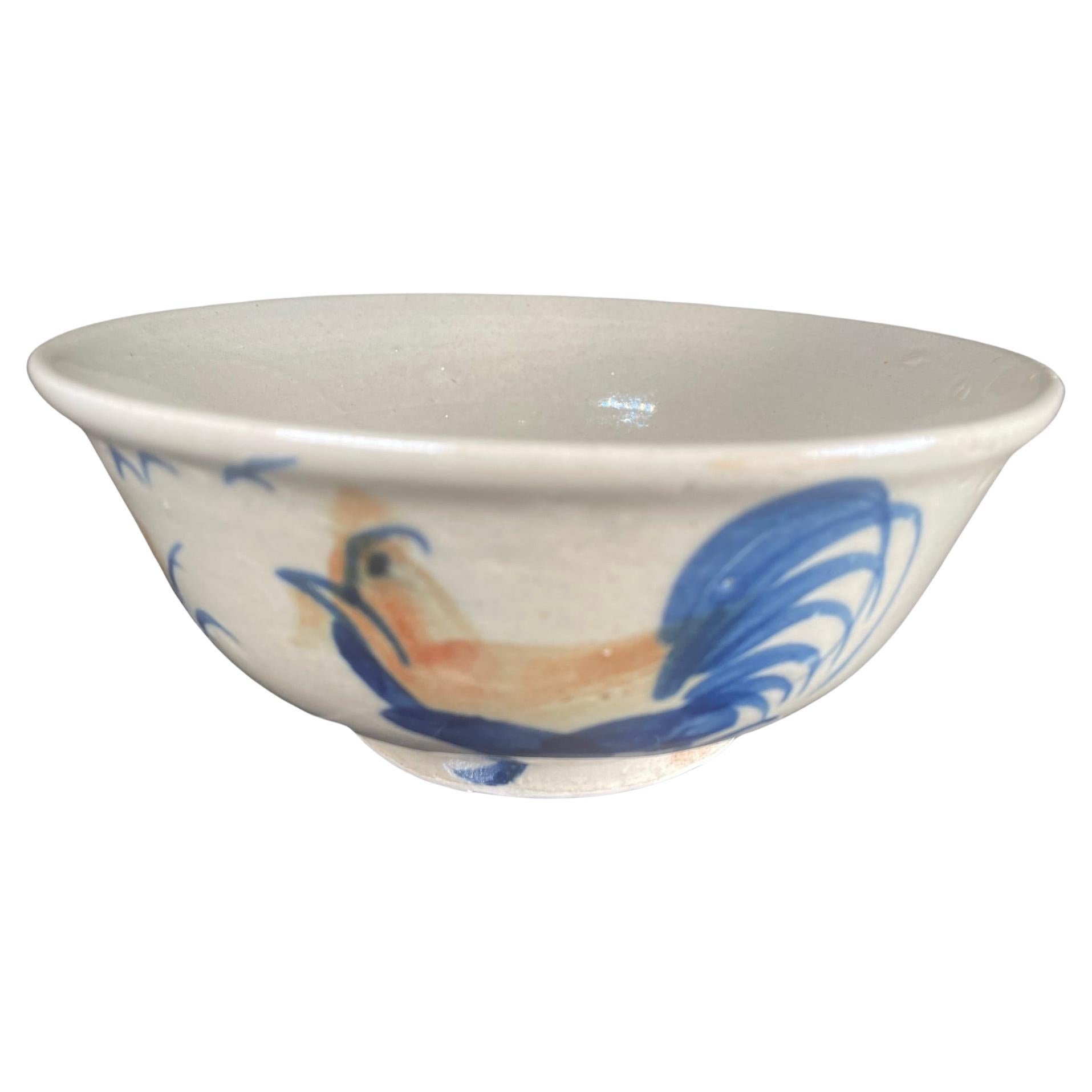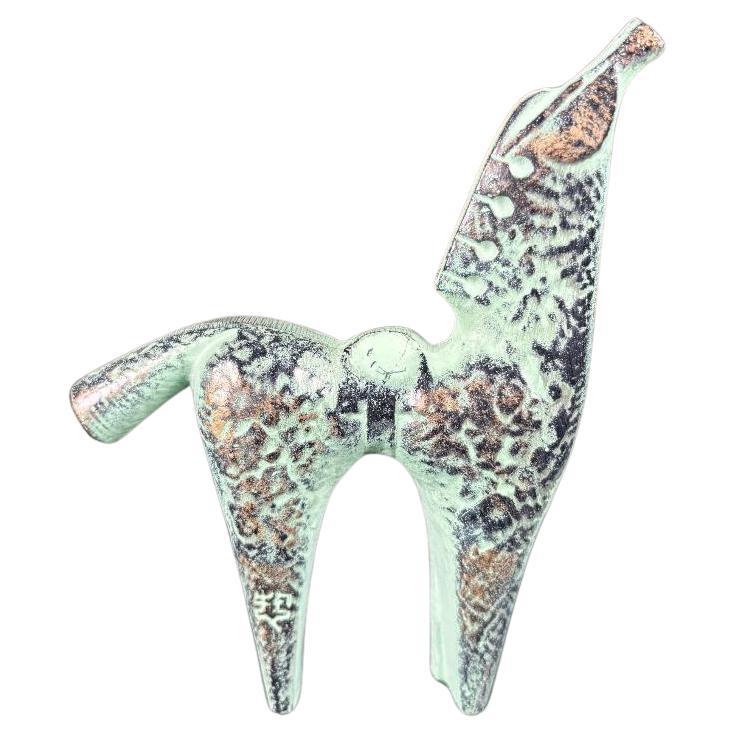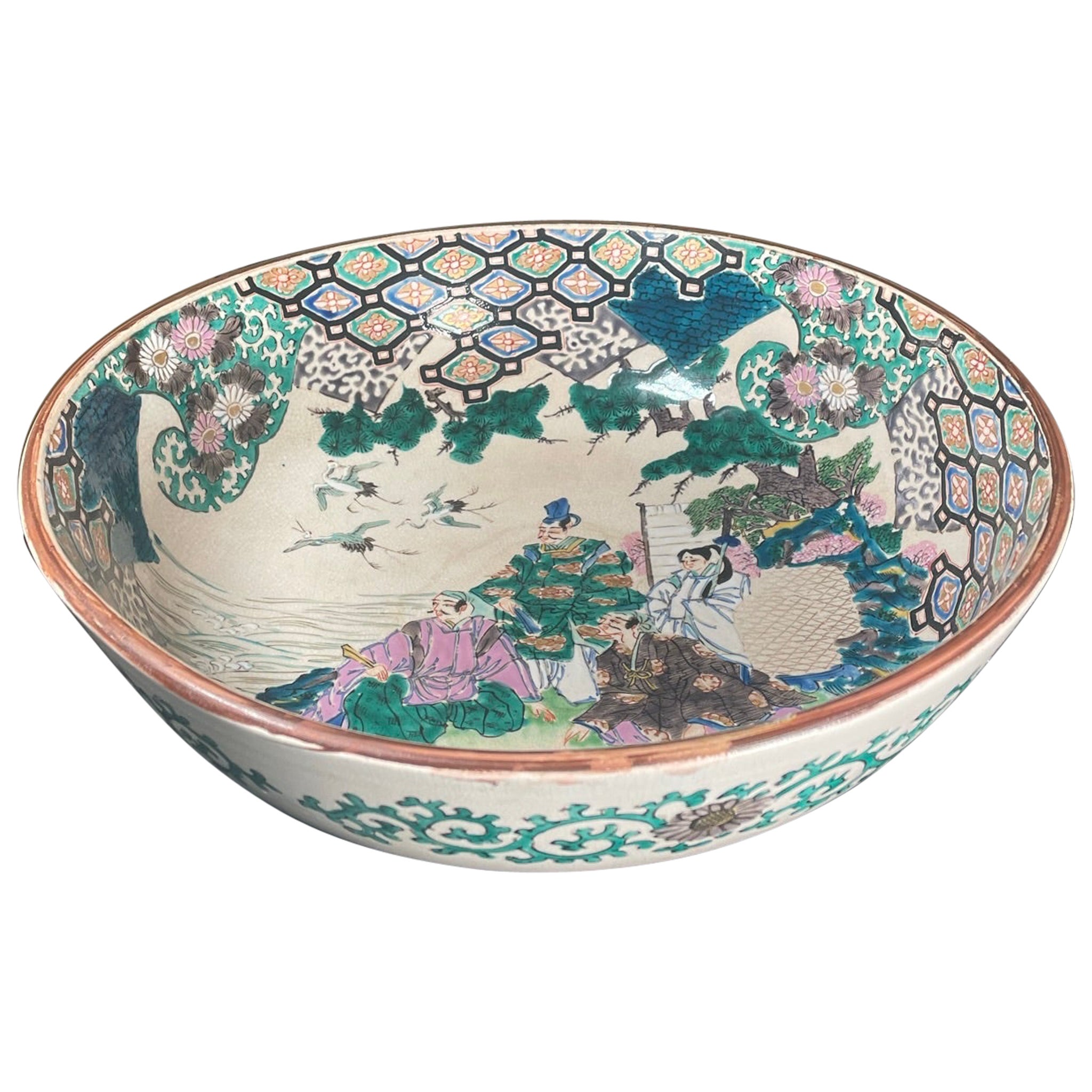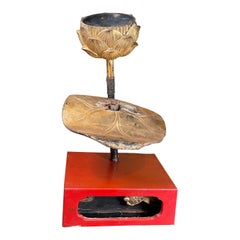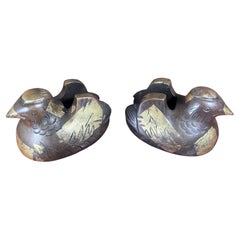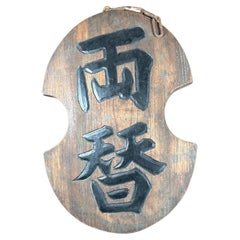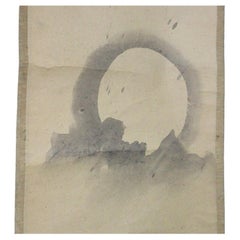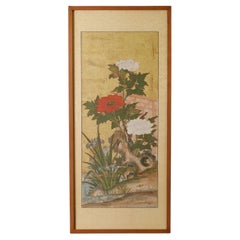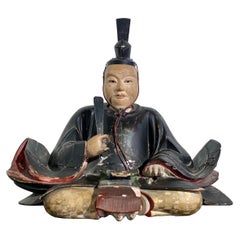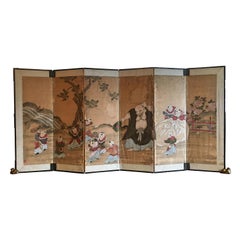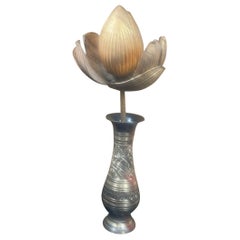
Japanese Fine Antique Gilt Lotus Bud Flower, Edo Period 19th Century
View Similar Items
Want more images or videos?
Request additional images or videos from the seller
1 of 14
Auction endedBrowse Current Auctions
Japanese Fine Antique Gilt Lotus Bud Flower, Edo Period 19th Century
About the Item
- Dimensions:Height: 18 in (45.72 cm)Width: 8 in (20.32 cm)Depth: 6 in (15.24 cm)
- Style:Edo (Of the Period)
- Materials and Techniques:
- Place of Origin:
- Period:
- Date of Manufacture:1840
- Condition:Wear consistent with age and use.
- Seller Location:South Burlington, VT
- Reference Number:1stDibs: LU1289233837282
About the Seller
5.0
Platinum Seller
Premium sellers with a 4.7+ rating and 24-hour response times
Established in 1990
1stDibs seller since 2015
2,378 sales on 1stDibs
Typical response time: 1 hour
Authenticity Guarantee
In the unlikely event there’s an issue with an item’s authenticity, contact us within 1 year for a full refund. DetailsMoney-Back Guarantee
If your item is not as described, is damaged in transit, or does not arrive, contact us within 7 days for a full refund. Details24-Hour Cancellation
You have a 24-hour grace period in which to reconsider your purchase, with no questions asked.Vetted Professional Sellers
Our world-class sellers must adhere to strict standards for service and quality, maintaining the integrity of our listings.Price-Match Guarantee
If you find that a seller listed the same item for a lower price elsewhere, we’ll match it.Trusted Global Delivery
Our best-in-class carrier network provides specialized shipping options worldwide, including custom delivery.More From This Seller
View AllJapanese Fine Antique Gilt and Red Lacquer Lotus Bud Flower, Edo Period 19th C
Located in South Burlington, VT
From our recent Japanese acquisitions, a rare find
Antique Original Japanese temple "blossoming lotus" flower bud stem including its original red lacquer display base. This finely hand carved wood and lacquered gold flower stem was made for a Buddhist 19th century temple altar. Its flower blossoms and leaves symbolize the stages of the path toward enlightenment. The individual parts of each lotus is carved separately then joined in an arrangement and inserted in altar vessels.
Also called "Jyôka" , it is placed on or next to an altar in a Buddhist temple. Made with meticulous techniques. In Buddhism, the lotus is an important symbol of divine enlightenment because it blooms into beautiful flowers while growing in mud. Tsunehana means "a flower that continues to bloom forever" and "a flower that does not wither." For this reason, the flowers represented are in different stages of their life, unfolded lotus leaves, buds and full flowers, thus symbolizing the journey towards Buddhist enlightenment.
This lovely Japanese antique gilt Lotus flower is an early survivor, circa 1840, and a hard to find treasure that was originally placed on or around a temple altar.
This ensemble consists of a single stem, the top most flower, and the bottom leaf- all mounted in the original square red lacquer display base. A gold gilt 3.5 inch long tortoise "minogame" is affixed to the base as seen in the photo.
Its attractive original old patina coupled with much of the original gilding remaining present is just the way we like to find them.
Dimensions: With original red lacquer display stand Height, 17 inches height and 9 inches in width. The lotus flower stem alone measures 16 inches in height.
Provenance: acquired from a Kyoto Japanse monk and collector
History of the Japanese turtle "minogame"
One of the most famous is the mythological giant turtle...
Category
Antique 1840s Japanese Edo Sculptures and Carvings
Materials
Wood
Japanese Fine Antique Pair Gilt Bronze Mandarin Duck Screen Holders
Located in South Burlington, VT
Best Quality, Hard To Find, complete with antique wooden collector box tomobako
A fine pair (2) of Japanese antique hand cast gilt bronze Mandarin Duck screen holders with highly d...
Category
Antique Late 19th Century Japanese Meiji Paintings and Screens
Materials
Bronze
Japanese Fine Antique Currency Exchange Shop Sign, Hand Carved
Located in South Burlington, VT
Japan, a beautifully handmade and hand carved black lacquer colored antique shop sign -kanban- for a Japanese currency exchange shop. The kanji translates to "currency exchange". Many antique Japanese shop signs...
Category
Antique Late 19th Century Japanese Taisho Sculptures and Carvings
Materials
Wood
$200 Sale Price
74% Off
Japanese Rare Antique Scroll of Waka Heart Poem Famous Rengetsu Otagaki, signed
Located in South Burlington, VT
Japan, a rare paper scroll hand painted by renown Rengetsu Otagaki (1791-1875). She was a very famous nun in old Japan and being familiar with poetry, her Waka poems on paper, and e...
Category
Antique Late 19th Century Japanese Edo Paintings and Screens
Materials
Paper
$1,600 Sale Price
20% Off
Japanese Imperial Pair Dolls 1840
Located in South Burlington, VT
From our recent Japanese acquisitions
A rare couple.
These Japanese Tachibina dolls represent the simplest essential form of the imperial couple. Their beautiful faces were crafted from crushed shell called gofun coated over carved wood and their dress feature period Edo (1840) textile kimono dress.
Used as the display for the Girl’s day celebration, more specifically they are constructed of kinran brocade fabric covered paper, the heads carved of wood and covered in gofun with painted features and inset hair, the male form with outstretched arms and conical legs, the female has a cylindrical form. They come in an original kiri wood storage box.
Dimensions: Large doll 12 inches tall and 6 inches wide
Small doll...
Category
Antique Mid-19th Century Japanese Edo Sculptures and Carvings
Materials
Shell, Wood
$1,000 Sale Price
48% Off
Chinese Fine Old Pair of Gilt Silver Fragrance Incense Holders
Located in South Burlington, VT
China fine pair (2) of handcrafted gilt silver fragrance incense holders
Flowers and fragrances were important to Chinese nobility. These handsomely crafted, highly detailed vessels perfect to hold and touch, would have undoubtedly carried flowers or other aromatic substances to create a welcoming ambiance intended for the afterlife.
Fine condition with remnant gold gilt over silver and traces of green Verdigris. Note the imperial bird of paradise motif on handle and at base of bulbs.
Dimensions: Each 14 inches long and 5 inches high
Provenance: old Hong Kong...
Category
Early 20th Century Chinese Qing Sculptures and Carvings
Materials
Silver
$1,200 Sale Price
57% Off
You May Also Like
Edo Period (19th) Japanese antique painting of flowers
Located in Fukuoka, JP
Japanese antique painting of flowers 19 C
Weight 3kg ( 6.6lb)
Category
Antique Mid-19th Century Japanese Edo Paintings and Screens
Materials
Silk, Paper
Antique 19th Century Japanese Two-Panel Screen ‘Byobu’, Kano School, Edo Period
Located in London, GB
Japanese Kano School Edo period two-panel screen depicting flowering prunus and bamboo on a rock formation, with colorful birds next to a body of water. ...
Category
Antique Mid-19th Century Japanese Edo Paintings and Screens
Materials
Gold Leaf
Japanese Carved and Lacquered Wood Shogun, Edo Period, 19th Century, Japan
Located in Austin, TX
An unusual Japanese carved wood, lacquer, and gilt decorated portrait sculpture of a shogun, Edo Period, early 19th century, Japan.
The unidentified shogun (possibly Tokugawa Iey...
Category
Antique Mid-19th Century Japanese Edo Sculptures and Carvings
Materials
Wood, Lacquer
Japanese Six Panel Screen with Hotei, Edo Period, Early 19th Century
Located in Austin, TX
A delightful Japanese six panel painted paper screen featuring the beloved figure Hotei, Edo Period, early 19th century.
Hotei, called Budai in China, and known as the Laughing Buddha or Fat Buddha in the West, is considered to be an emanation of Maitreya, the Buddha of the Future.
In Japan, he also holds a special place as one of the Seven Lucky Gods, being the god of fortune, and protector of children.
He is always portrayed as a mirthful and corpulent man, dressed in loose robes that show off his round belly. He carries a sack with him, said to be filled with treasure. As the protector of children, he is often portrayed with them playing on or around him, as he is here. The children portrayed in this screen are dressed in Chinese style clothing...
Category
Antique Early 19th Century Japanese Edo Paintings and Screens
Materials
Silk, Paper
Japanese "Magpie and Peony" Two Panel Screen, Edo Period, 18th/19th century
Located in Austin, TX
A sublime Japanese two panel "Magpie and Peony" screen, ink and color on paper, Edo Period, late 18th or early 19th century, circa 1800, Japan.
The two panel screen features a wond...
Category
Antique Early 19th Century Japanese Edo Paintings and Screens
Materials
Copper
Japanese Standing Gilt Buddha, Amida Nyorai, Edo Period, 18th century, Japan
Located in Austin, TX
An exquisite Japanese carved hinoki and gilt lacquered standing figure of Amida Nyorai, Amitabha Buddha, Edo Period, 18th century, Japan.
The spectacular fully gold gilt figure of A...
Category
Antique 18th Century Japanese Edo Sculptures and Carvings
Materials
Rock Crystal
Recently Viewed
View AllMore Ways To Browse
Monks Vases
Bronze Lotus Vase
Wood Bud Vases
Antique Japanese Altar
Gold Japanese Lotus Flowers
Bronze Vase Japan Edo
Buddhist Altar Flowers
Japanese Bronze Bud Vase
Japanese Rare Antique Lotus Flowers
Japanese Stone Basin
Large Jade Sculpture
19th Century Chinese Lantern
Chinese Landscape Sculpture
Hand Carved Hong Kong Furniture
Japanese Lucky Charm
Prayer Ring
Japanese Inro
Prayer Stones

